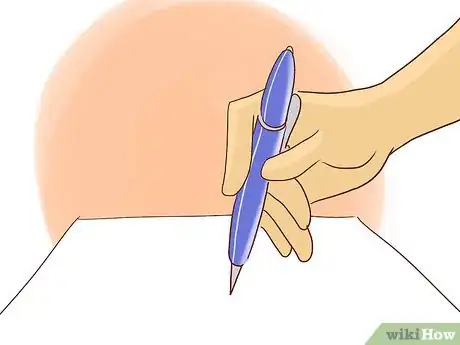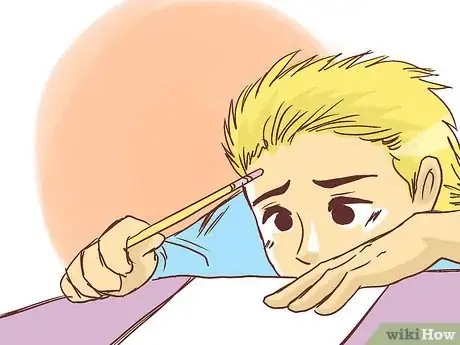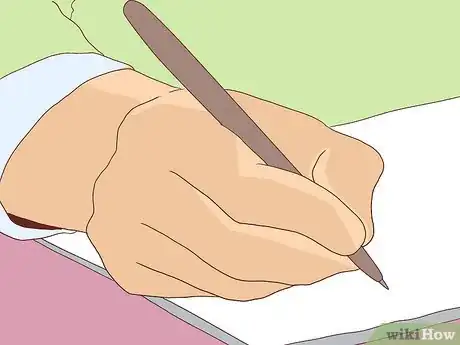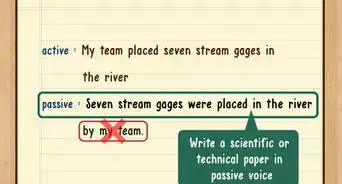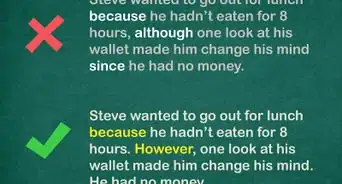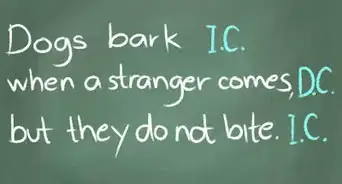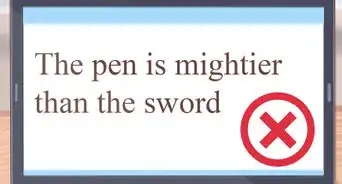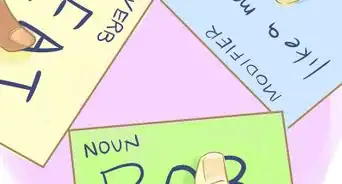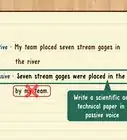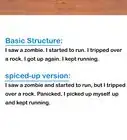X
wikiHow is a “wiki,” similar to Wikipedia, which means that many of our articles are co-written by multiple authors. To create this article, volunteer authors worked to edit and improve it over time.
This article has been viewed 36,540 times.
Learn more...
If your essay is a road trip and your introduction and thesis are a roadmap, transition sentences are the signs on the road. They tell your reader where to turn by connecting where they’ve been with where they’re going, similar to how a street sign connects the street a driver is on with the street she is about to move or exit onto. Good transition sentences will help you create a well-structured essay, with sentences that flow seamlessly from one idea to the next.
Steps
Method 1
Method 1 of 4:
Part 1: Locating Good Transitional Areas in Your Essay
-
1Identify the main sections in your paper. If you outlined your paper before you started writing it, this step shouldn’t be too difficult. If you didn’t make an outline, go through the paper and highlight similar ideas in a section.
- For example, is your first paragraph all about the same idea? Then highlight this idea in one color. Some ideas may go over several paragraphs, depending on the length of your paper.
- Don’t forget to mark your introduction and conclusion as their own separate sections, as they each cover different aspects of your thesis.[1]
-
2Write out a short phrase for each main idea. For example, if your paper is about dragons, then one idea may be “the symbolism of the dragon," and another idea in another section may be “dragons in mythology.”Advertisement
-
3Reread your paper from beginning to end. Are there any sections that seem choppy? Does one section seem to jump from one idea to another without any connecting sentences? Mark or highlight these areas.
- It’s a good idea to also ask someone to read your paper, and have them mark or note any sections that seem abrupt or choppy to them.
Advertisement
Method 2
Method 2 of 4:
Part 2: Writing Transitions Between Two Main Ideas
-
1Look at any areas where two main ideas meet each other on the page. When writing a transition sentence, you are trying to move smoothly from one idea to the next. Think about how the two ideas are alike; how do they relate to each other?[2]
- For example, how is dragon symbolism like dragons in mythology? You could connect these two ideas together by arguing that dragon symbolism is developed in dragon mythology. So, in a way, one idea creates the other idea.
-
2Write a sentence that summarizes the first idea. This will let the reader know that you are moving from the first idea to the second idea.
- For example: “The symbolism of the dragon has a rich history…”
-
3Connect the first idea with the second idea by showing how they are related. Using our example, the transition sentence would be: “The symbolism of the dragon has a rich history, which was largely developed in the mythological tales told about dragons throughout history, such as the legend of King Arthur.”[3]
- In the second part of this sentence, you are showing that you are talking about dragon mythology next in a general sense, and you immediately provide an example, in this case, the tale of King Arthur.
Advertisement
Method 3
Method 3 of 4:
Part 3: Writing Transitions within the Same Idea
-
1Always have transition sentences within your main ideas. You will need to provide examples around the main idea in a section, so transitions will help you do this smoothly.[4]
- For example, in one section, you may begin with the mythology of dragons in the legend of King Arthur and then transition to discuss mythical beasts and dragons in the Bible.
-
2Begin the transition with the first example. “Dragons abound in mythology beyond the legend of King Arthur…”
-
3Use the similarities and the differences between the two examples to create a transition. Consider what the similarities and the differences are between the legend of King Arthur and the Bible. Both are legends or myths, but the Bible is a central text to one of the world’s major religions.[5]
- So, you can use this difference to transition to the second example: “Dragons abound in mythology beyond the legend of King Arthur, including some of the central texts of the world’s major religions, such as the Bible.” This is an effective transition because it shows how the examples are similar and how they are different.
Advertisement
Method 4
Method 4 of 4:
Part 4: Understanding When to Use Transition Sentences
-
1Only use a transition sentence when you are trying to discuss two different ideas. In a paragraph that discusses the same two ideas or examples, you don’t need a transition.[6]
-
2Avoid overusing transition words. While words like “in addition,” “however,” and “also” can be very helpful for transitioning, they should be used sparingly. Otherwise, the paper will come across as stilted and too formal.[7]
-
3Don’t try to force connections between two ideas. If two ideas are placed near each other in your paper, but don’t seem connected, than maybe one of them doesn’t belong or maybe it needs to be moved to a different section. Your ideas should flow logically in your paper.
-
4Use transition sentences to make your writing sound better and give it a sense of flow. Transition sentences are essential to a well-structured essay because they introduce new ideas and help guide the reader. The best writers use transitions to connect the dots between ideas and help their reader understand the overall theme or overarching argument of their essay.[8]
Advertisement
References
- ↑ http://writingcenter.unc.edu/handouts/transitions/
- ↑ https://www.strose.edu/wp-content/uploads/2015/10/Transition-Sentences-Handout-2012B.pdf
- ↑ https://www.gallaudet.edu/tutorial-and-instructional-programs/english-center/the-process-and-type-of-writing/guide-to-transition-words-and-sentence-samples
- ↑ https://www.strose.edu/wp-content/uploads/2015/10/Transition-Sentences-Handout-2012B.pdf
- ↑ https://writingcenter.ashford.edu/transitional-phrases
- ↑ http://writingcenter.unc.edu/handouts/transitions/
- ↑ https://writing.wisc.edu/handbook/style/transitions/
- ↑ https://writingcenter.ashford.edu/transitional-phrases
About This Article
Advertisement
